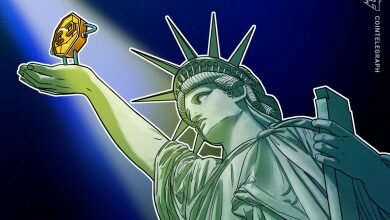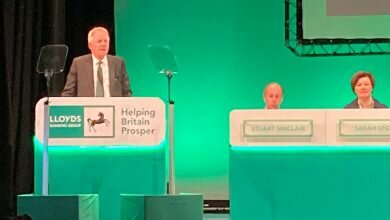Inflation returns to haunt Brazilians

Carlos Vieira, a carpenter in So Paulo, hoped that runaway inflation had been handed down to Brazil’s past.
Now, with the cost of her materials doubling in just three years, she fears those days are back. “I have never seen anything like this since I founded the workshop in 1998. , , There have always been ups and downs, but now we are grappling with this crisis and the ones before,” the 57-year-old said, referring to the Ukraine war and the pandemic.
Annual inflation in Brazil is at a nearly two-decade high of 12 per cent. Driven by rising global food and fuel costs, officials are increasingly concerned that price pressures are sweeping the economy.
Central Bank Governor Roberto Campos Neto told reporters in April that the sharp rise in prices of items such as clothing and eating out in recent months is “a big surprise”.
Inflation is nowhere near as bad as it was in the 1980s and 1990s, when supermarkets commented on prices twice a day to keep pace with rising prices. Measures ranging from the introduction of a new currency to liberating the central bank helped bring price pressure under control, after a record 4,500 percent increase from 1994 to June 1994.
You are viewing a snapshot of an interactive graphic. This is most likely caused by being offline or by having JavaScript disabled in your browser.
But the specter of Brazilian hyperinflation was never completely abated. Many contracts – covering everything from rental housing to the supply of raw materials – still have automatic adjustments, a legacy of a time when prices and wages regularly rose between 30 and 40 percent per month.
Some contracts, such as for rent as well as telephone and electricity charges, use an alternative measure of wholesale inflation, which is 15 percent significantly higher than the consumer price index.
The wholesale measure, which is weighted toward producer prices, was up more than 40 percent for most of the previous year, putting pressure on businesses like Veera’s Carpentry Workshop. He said his margins have shrunk by about a third in the last three years.
The prevalence of these inflation contracts is hindering efforts by Brazil’s central bank to control inflation and increases the risk of price increases. Alessandra Ribeiro, economist at Tendonias, a consultancy in So Paulo, said: “The fight is so tough and the central bank will have to be more aggressive.”
Inflation is nowhere near as bad as it was in the 1980s and 1990s, when supermarkets remarked prices twice a day to keep pace with rising prices © Julio Pereira / AFP / Getty Images
Eliminating inflation was a battle that until recently, the central bank seemed to have won. Brazilian policymakers, an early adopter of inflation targeting, had gained enough credibility to reduce the benchmark celiac rate to just 2 percent in 2020. This trend is now the opposite.
Salic has been increased 10 times to 12.75 per cent since March last year. The 11th growth rate is expected to pick up to 13.25 percent next month.
To make matters worse, central bank hikes run the risk of slashing demand and causing a recession. Growth is already anemic and there is a high probability of a severe bout of stagflation, where inflation rises and production stagnates. According to a central bank survey of market economists, output is projected to grow only 0.7 percent this year. The forecast for next year is better at barely 1 percent.
In March Brazil’s government cut fuel taxes hastily after staging the latest in a series of protests by lorry drivers over rising diesel prices © Philippe Araujo / AFP / Getty Images
Meanwhile, moves by their US counterparts will put monetary policymakers in Brazil in a bind where they can do little to get growth back on track. While the real has strengthened against the dollar this year, rate hikes from the Federal Reserve threaten to undermine those gains in the coming quarters.
In such an environment, rate cuts run the risk of currency depreciation, raising the cost of imports and prompting investors to abandon assets.
“At some point the central bank [in the region] Rates have to be cut,” said Alberto Ramos, head of Latin American economic research at Goldman Sachs in New York. “But sometime in 2023 [Fed] Going to be in full hiking mode. It will be very difficult for those central banks to make cuts while the Fed is hiking.”
While Brazil’s problems are exacerbated by its history of high inflation, they are not unique. Prices in emerging markets are rising at an average annual rate of about 14 percent, more than twice that in advanced economies. Argentina’s headline inflation is running close to 60 per cent annually.
The pain is particularly acute for poor people, who spend a relatively large portion of their income on food and are exposed to sharp increases for products such as household fuels used for cooking and heating, which Brazil has more than 30 percent.
High energy prices have also sparked unrest. In March, Brazil’s government hastily cut fuel taxes after lorry drivers blocked highways with burning tyres, the latest demonstration by lorry drivers to protest a hike in diesel prices.
“There is no doubt that inflation is a tax, and a socially regressive tax, that disproportionately affects low-income households,” Ramos said. “It’s a serious problem everywhere in Latin America.”




